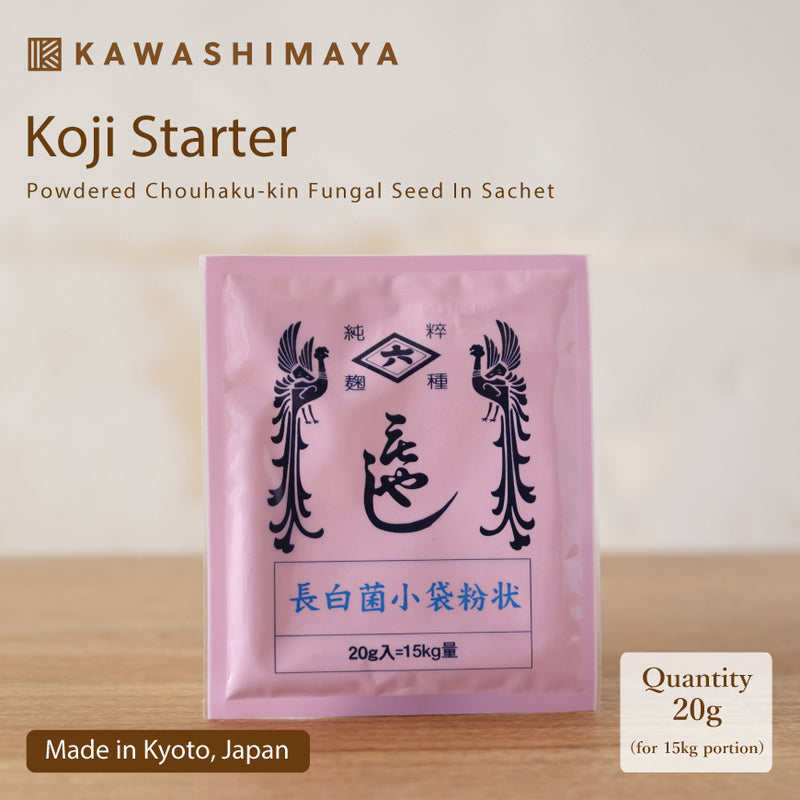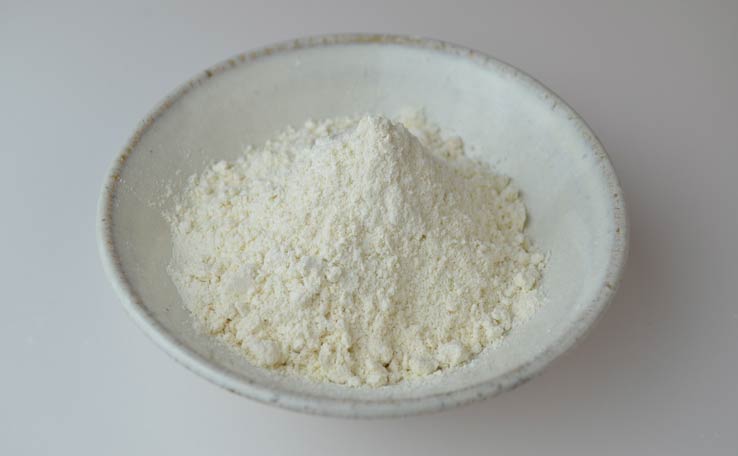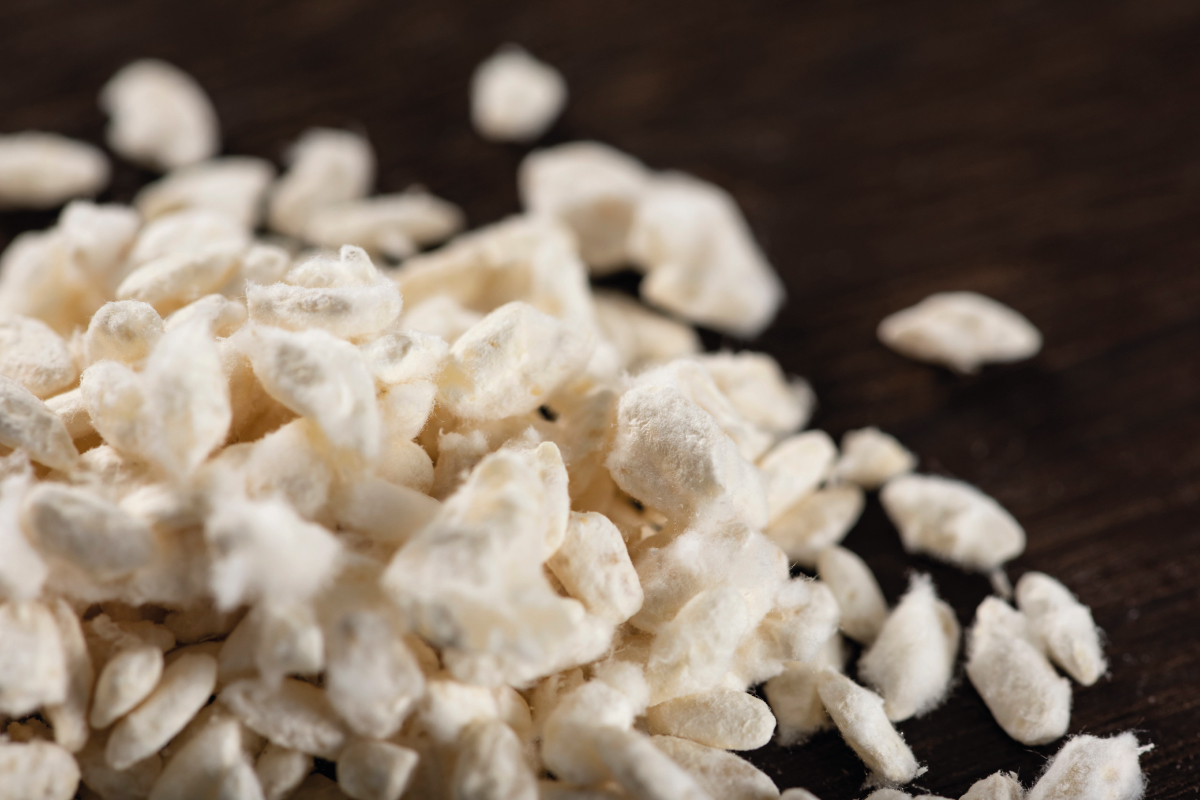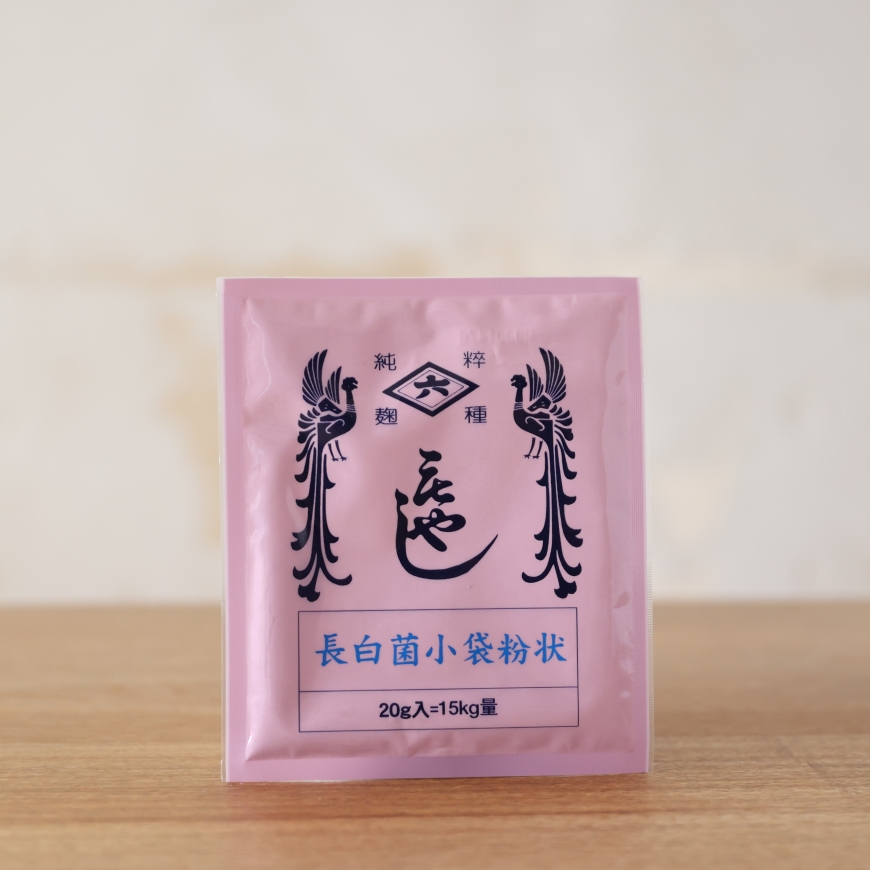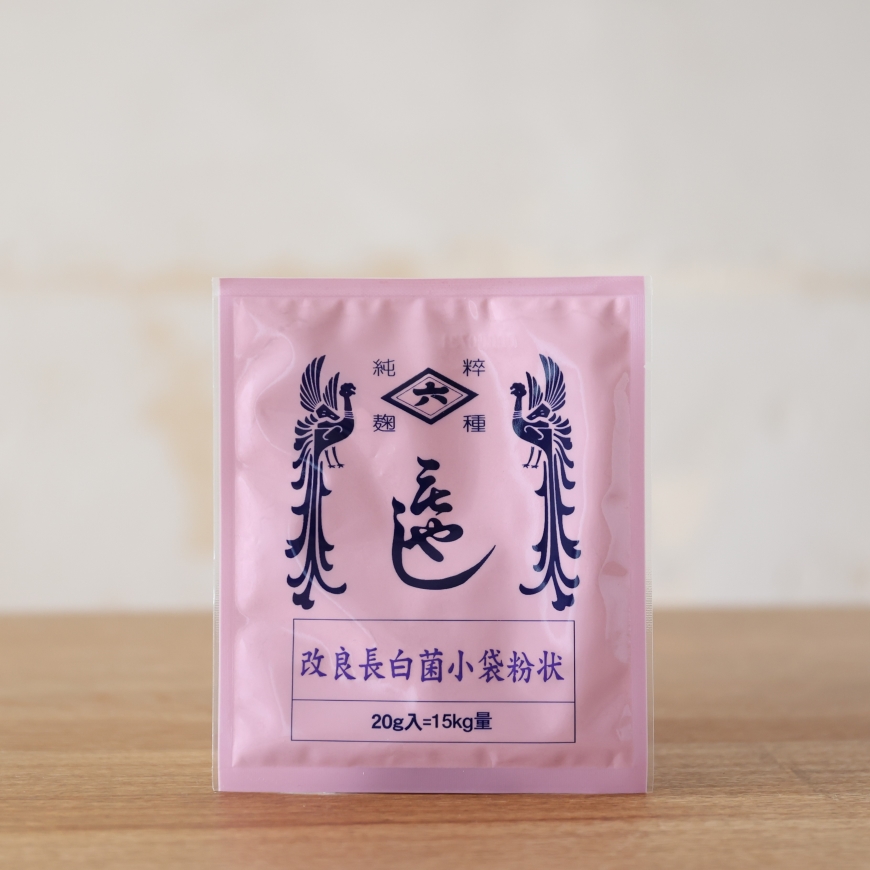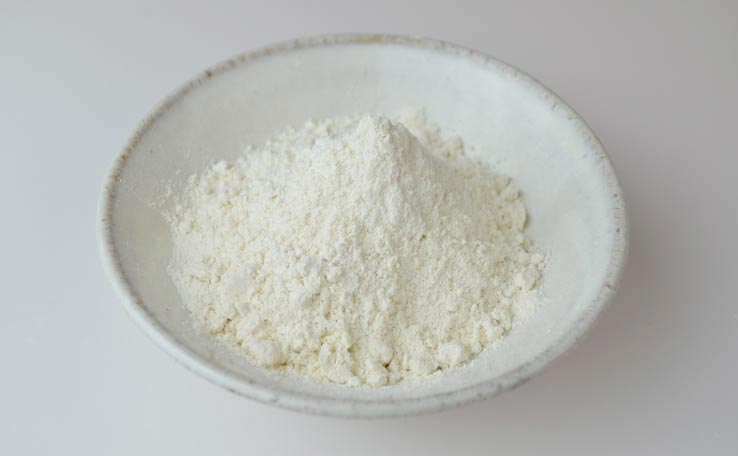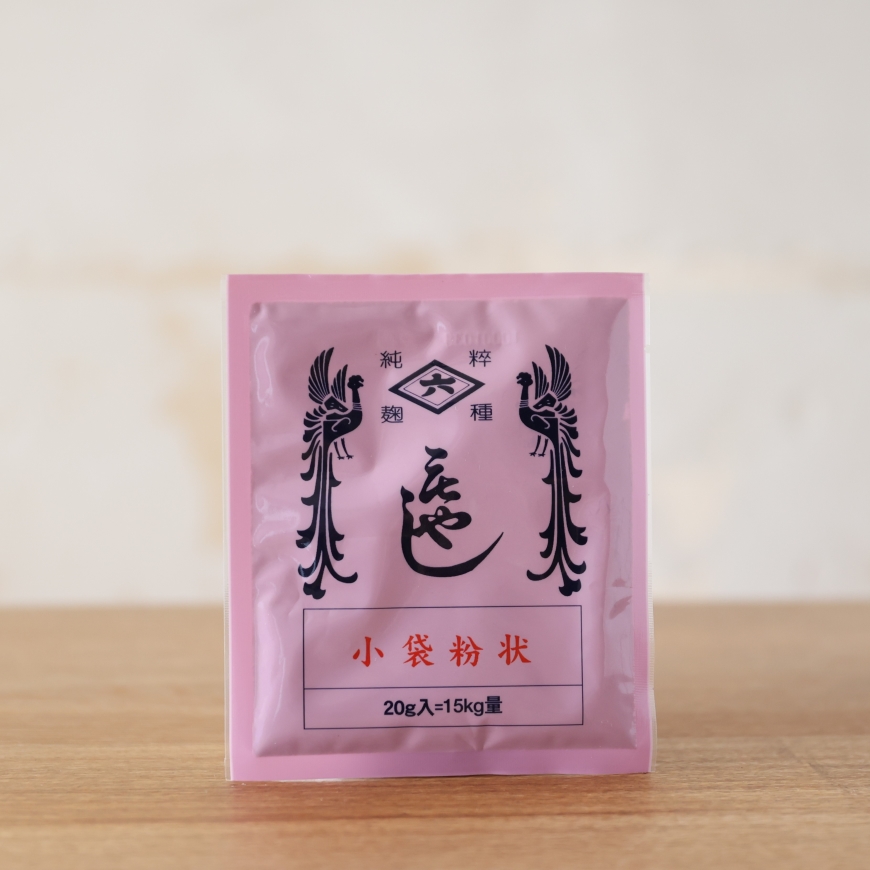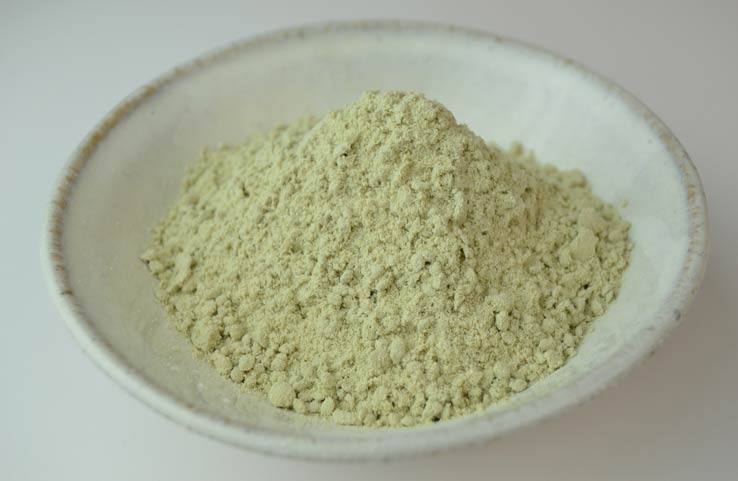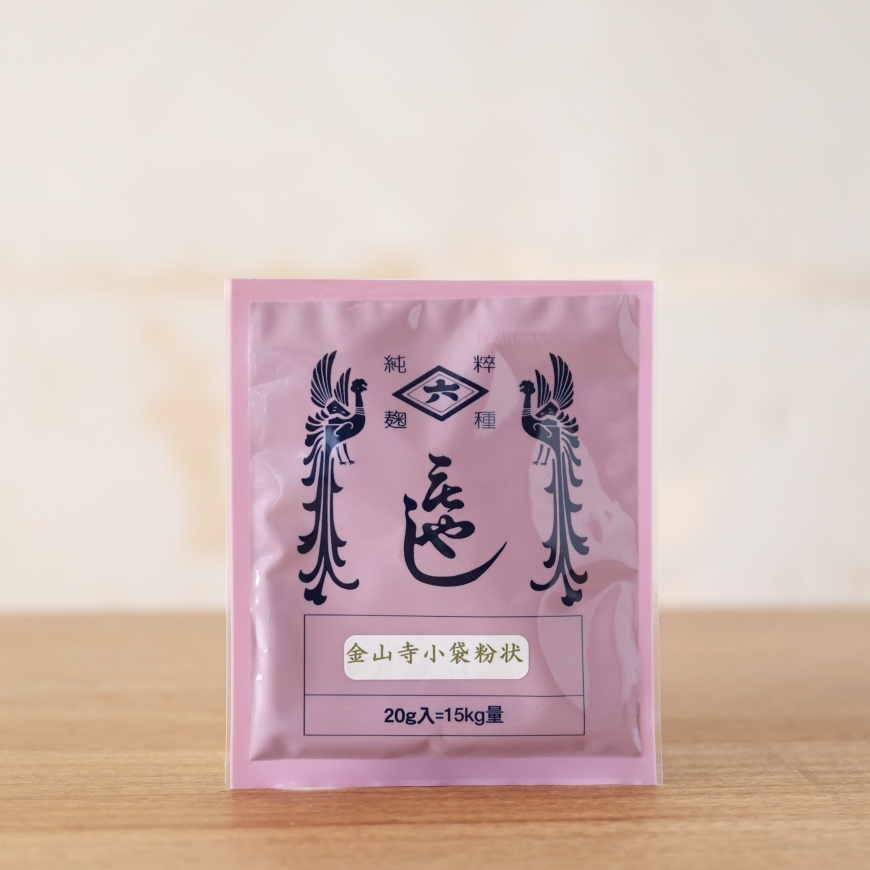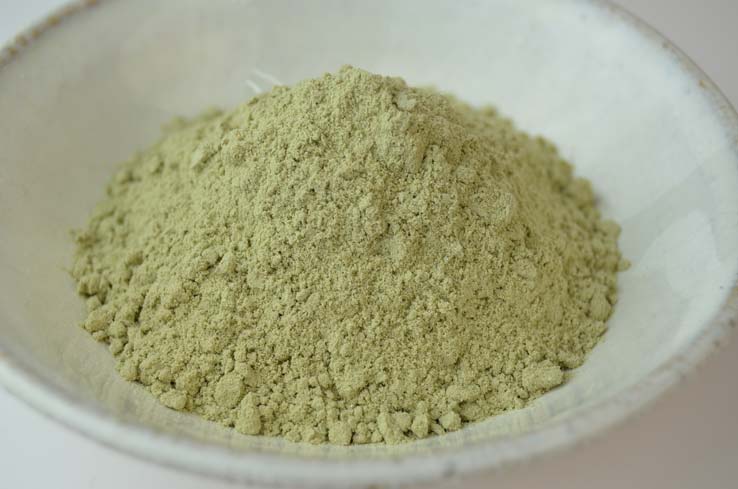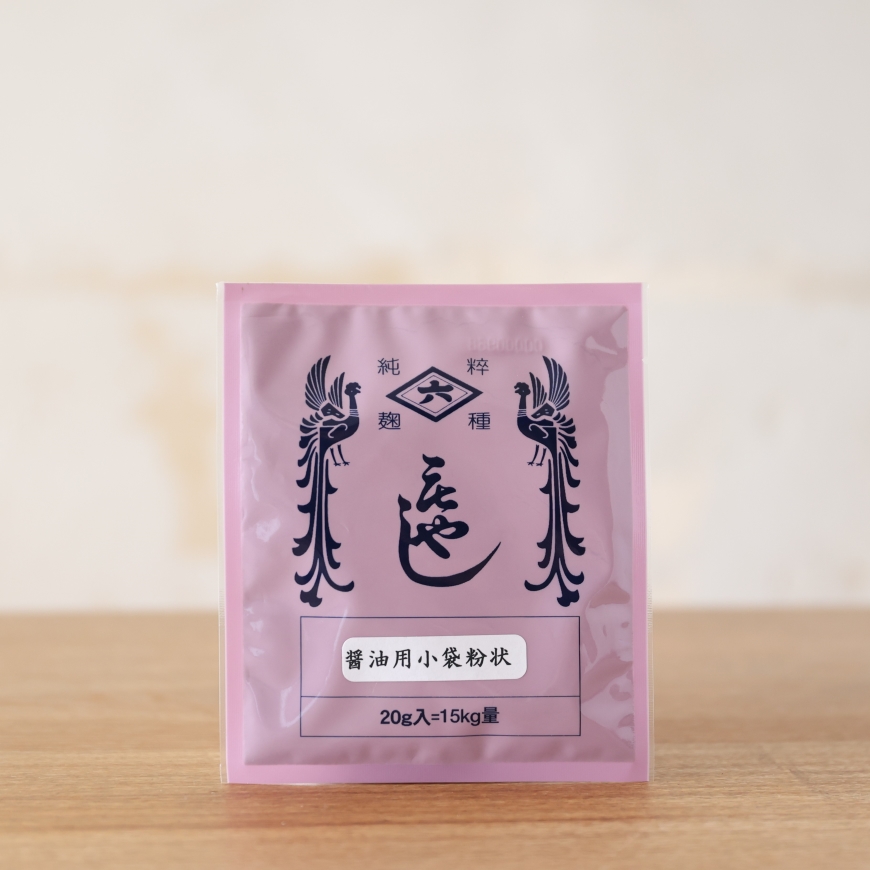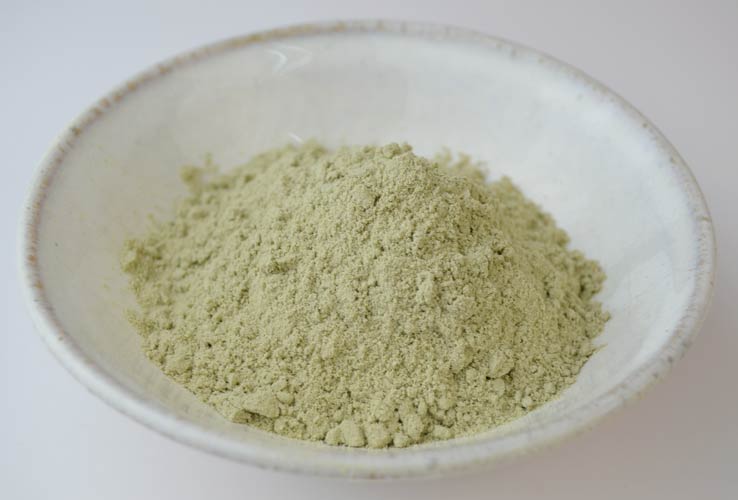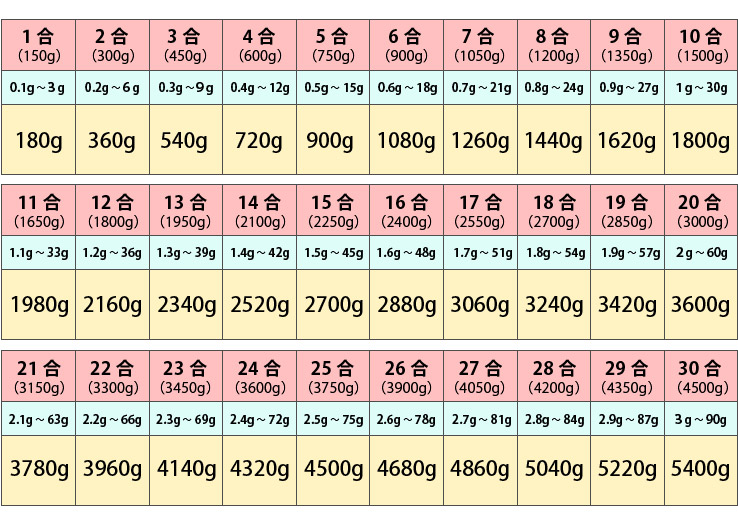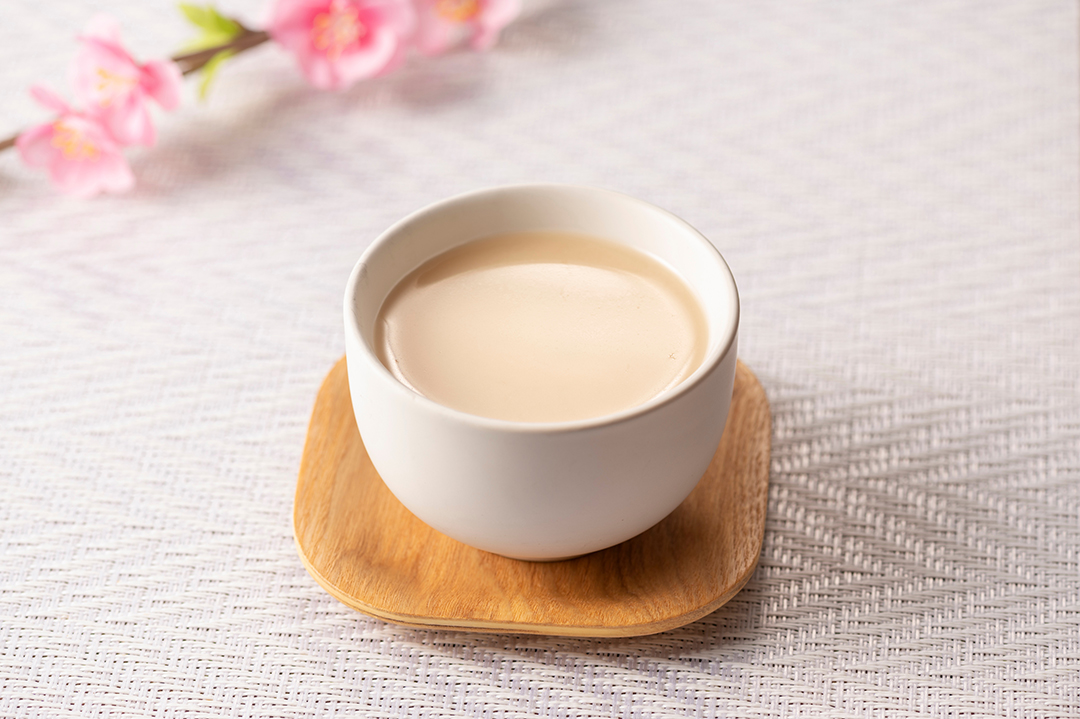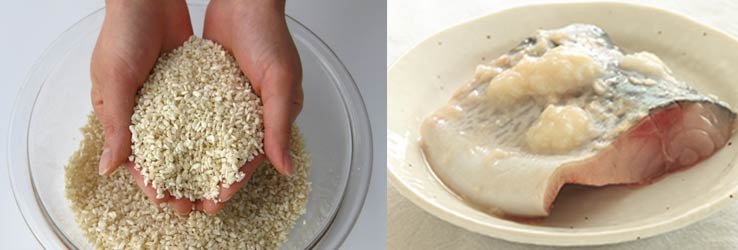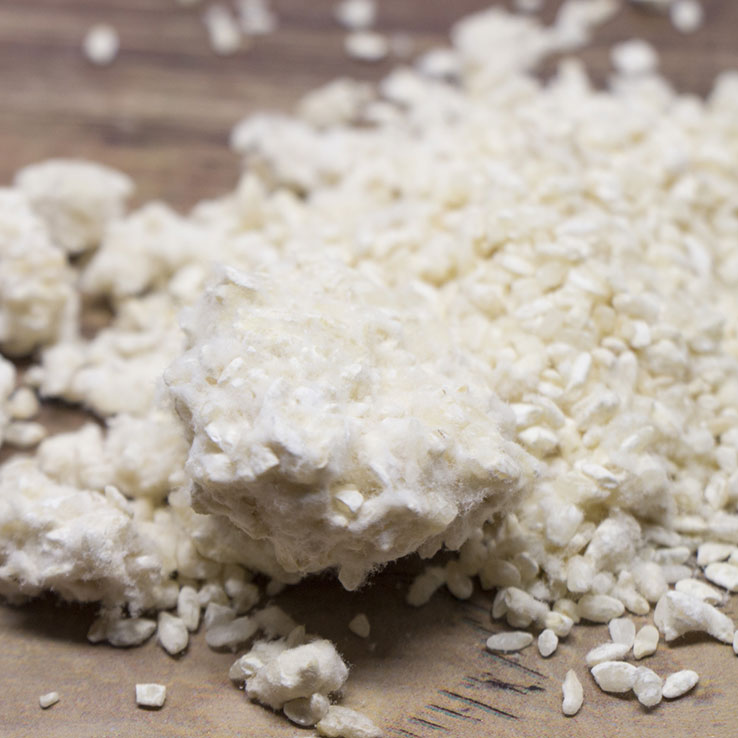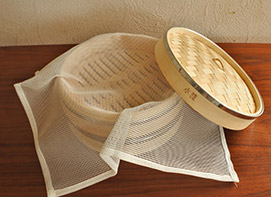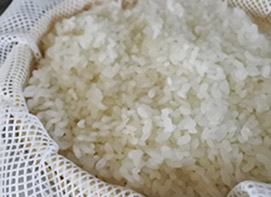What is Koji Starter --Powdered Chouhaku-Kin Fungal Seed?
This is the best-suited koji starter for making koji and is ideal for making koji at home, made by a 300 years long-established store, "Hishiroku".
This koji starter is from the Chouhaku-kin variety, and its features are long hyphae and a low rate of browning reaction.
Because this variety of koji starter is hard to discolor / change in color and maintain its white color firmly, it's great to make koji rice, amazake (sweet sake), white miso, and other white-colored foods and drinks.
Compared to the Kairyou Chouhaku-kin variant, the Chouhaku-kin is even whiter in color so it is perfect to make white colored fermented foods.
This product contains 20g of koji starter (Aspergillus) that can be stored for a long time in a convenient sachet package, so you can open it just as much as you need.
20g of this koji starter can be used for 15kg of rice in koji-making (the weight of rice before adding water is 15kg).
What is Koji Starter/Koji Seed?
Koji starter or koji seed is the Aspergillus spore that becomes the source of koji.
In the brewing industry, we call the koji starter "sprouts". We can make koji to produce fermented foods such as miso and amazake (sweet sake) with these sprouts.
The appearance of the koji starters bud popped out, and its whitish hyphae grow the bean sprouts and budding trees figure, so it's called like that.
Various Kinds of Koji According to the Purpose
Chouhaku-kin Koji Starter
- For making Amazake (Sweet Sake): Very suitable
- For making Shio Koji (Salt Koji): Very suitable
- For making White Miso: Very suitable
- For making Rice and barley/wheat miso: Suitable
- For making Bean miso: Suitable
- For making Shouyu (Japanese soy sauce): Suitable
Features
The finished result is white koji. Basic koji starter that suitable for any kojis.
Kairyou Chouhaku-kin Koji Starter
- For making Amazake (Sweet Sake): Very suitable
- For making Shio Koji (Salt Koji): Very suitable
- For making White Miso: Very suitable
- For making Rice and barley/wheat miso: Suitable
- For making Bean miso: Suitable
- For making Shouyu (Japanese soy sauce): Usable, but not recommended
Features
Ideal for amazake (sweet sake). The finished result is the most white-colored that other koji starter. Recommended for white miso.
Koji Starter for Miso
- For making Amazake (Sweet Sake): Usable, but not recommended
- For making Shio Koji (Salt Koji): Usable, but not recommended
- For making White Miso: Usable, but not recommended
- For making Rice and barley/wheat miso: Very suitable
- For making Bean miso: Suitable
- For making Shouyu (Japanese soy sauce): Suitable
Features
Ideal for rice and barley/wheat miso. The finised result will have a balanced taste.
Kinzanji Koji Starter
- For making Amazake (Sweet Sake): Usable, but not recommended
- For making Shio Koji (Salt Koji): Usable, but not recommended
- For making White Miso: Suitable
- For making Rice and barley/wheat miso: Suitable
- For making Bean miso: Very suitable
- For making Shouyu (Japanese soy sauce): Suitable
Features
Ideal for bean koji. Increase the flavor of bean miso (mame miso).
Koji Starter for Shouyu
- For making Amazake (Sweet Sake): Usable, but not recommended
- For making Shio Koji (Salt Koji): Usable, but not recommended
- For making White Miso: Usable, but not recommended
- For making Rice and barley/wheat miso: Usable, but not recommended
- For making Bean miso: Usable, but not recommended
- For making Shouyu (Japanese soy sauce): Very suitable
Features
Ideal for shouyu (Japanese soy sauce). It will have delicious result.
More Fermented Foods Recipe from Kawashima The Japanstore
What is Koji?
Give water to raw grains (rice, barley, beans, etc.), sprinkle seeds on steamed grains, and culture the seeds under temperature conditions suitable for the growth of Aspergillus oryzae.That is how this koji starter is made.
Koji has so many enzymes that it is said to be a treasure house of enzymes and could decompose grains with its power. Also, koji itself is a nutritious food filled with sugar, amino acids, vitamins, minerals, etc. All these nutritions are made by the koji starter (Aspergillus oryzae).
With koji, you can make traditional fermented foods such as sake, authentic shochu, mirin, miso, soy sauce, vinegar, amazake (sweet sake), etc.
Health Benefits of Koji
When the intestinal environment (intestinal flora) gets better, your skin condition will be better, and immunity will be improved. It is a fermented food that arranges this intestinal environment.And, fermented foods are always made by microorganisms that induce fermentation.
The familiar ones are Aspergillus oryzae, Bacillus natto, Lactobacillus, and other bacteria/fungus. The one that creates miso, shouyu (Japanese soy sauce), and sake is koji starter (Aspergillus oryzae). This koji starter (Aspergillus oryzae) matches well with Japan's climate, and it was found in the Muromachi Period (1336–1573).
| Major Nutrients of Koji |
| Vitamin B1 |
・Helps produce energy
・Fatigue recovery
・Suppress irritation/stress feeling
・Amnesia prevention
・Helps breaking down carbohydrates
|
| Vitamin B2 |
・Helps the metabolism of skin
・Helps breaking down lipids
・Accelerate growth speed
・Sebum control
・Prevent oral ulcer/stomatitis
|
| Vitamin B6 |
・Reduce premenstrual syndrome (PMS)
・Improve immunity
・Prevent arteriosclerosis
・Helps breaking down proteins and lipids
・Prevent oral ulcer/stomatitis
・Suppress the excitation of nerve cells
|
| Vitamin H (Biotin) |
・Suppressing the cause of atopic dermatitis
・Prevent diabetes
・Alleviate epilation and gray hairs
|
| Pantothenic Acid |
・Stress resistant
・Helps breaking down lipids
・Detoxification from chemical compound
・Increase good cholesterol
・Maintaining the health of skin
・Increase immunity
|
| Essential Amino Acids |
Among the 20 types of amino acids making up proteins, nine kinds of them can not be synthesized in the body. If there are any lacks of them, muscle, blood, bone cannot be made. These nutrients can be consumed in supplements, but when ingested from koji based food, the absorption rate in body is over 90%.
|
The Amount of The Koji Rice That Can be Made and the Amount of Rice and Koji Starter Used
Portion of rice
Portion of koji starter
Amount of finished koji (estimated)
Note: 合 is a Japanese unit of measurement, usually used to measure rice, sake, etc. (1合 equal to approx. 150 grams, 0,18 liters, or 0,33 metres square)
This table references the amount of koji rice and koji starter seed.
It's easier to make koji rice for the koji starter if you use koji starter in a larger amount. There will be no problem even if you use a lot of koji starters.
The Amount of Miso That Can Be Made and the Amount of Ingredients Used
This is the portion for miso with salt concentration 12.5% (sweet flavor).
For the details related to koji rice, please go to these pages:
Related article
How to Make Koji Rice
This tutorial was provided by the koji manufacturer themselves, and summarized by Kawashima The Japanstore. Feel free to use this as a reference to make rice koji. We hope that you can make good rice koji. Now, let’s get to it!
Related article
Recipes hat Uses Koji Rice
Shio Koji, also known as Salt Koji, is made up of rice koji, salt, and rice. Shio koji has been widely used in Japan with ancient origins as a seasoning or ingredient, particularly for fermented foods.
The Benefits of Handmade Koji Rice
You know exactly what ingredients are being used.
Formerly, miso, shouyu, amazake, etc., were homemade with koji in the Japanese family. However, eating habits change with time, and miso, shouyu, amazake changed from "things to make" to "things to buy." Under such circumstances, many people are uneasy because they don't know what type of rice is used in foods such as miso and shio koji (salt koji) available at supermarkets, etc. If it's handmade, you can make it with pesticide-free rice prepared by yourself, so it's safe.
Handmade is fun!
When Kawashimaya's staff tried to make handmade koji rice, they were impressed that their hands became so smooth. It's a famous story that because they engage in sake-making, the hands of a chief brewer at a sake (Japanese liquor) brewery are beautiful. In koji rice's nutrients, there are a lot of components that make the skin beautiful. Then, if you make koji rice by yourself, you will take care of it like your own child. Thus, the miso and amazake you made will become more delicious.
It's more economical.
When making miso, you will need koji in kilograms. If you buy it, it will be really pricey. For that, if you make your own koji using a koji starter (Aspergillus oryzae), it will be much more economical because you can even make koji rice from 15kg of rice.
The Steamed Rice, is What Determines the Quality of Koji Rice
If the rice used in koji rice making is cooked with a rice cooker or the like, the amount of water (60% or more) becomes too much, and it won't be finished as good koji rice.
In order to make the rice with moderate water content (about 38%), it's necessary to "steam" the rice with proper steam.
The koji-making professionals make steamed rice with a bamboo steamer (seiro).
Furthermore, by using a steaming cloth made of tetoron, the time loss (temperature drop) caused by the rice sticking on the cloth can be eliminated so that you can do the seeding step (sprinkling the koji starter on steamed rice) smoothly.
Koji-making Professionals' Favorite Tools! Koji-making's Best Friends
Strong against high temperature, excellent in steaming.
Rice won't stick to the cloth, a convenient steaming cloth.
It's also useful for moisture control during the warming of koji.
Steamed rice is the key to making koji.
Using bamboo steamer/seiro, steam the rice with high heat for about 40 minutes.
It's also a helpful tool for daily dishes.
Tips for Making Steamed Rice from the Professionals
A bamboo steamer is recommended to steam the rice!
Cover the steamer basket when steam/vapor comes out from the surface of the rice and the surfaces become transparent.
Steam it for about 40 minutes (recommended) after putting on the lid.
When steaming in the bamboo steamer with two or more rows, change the order of rows midway through the steaming process.
Message from Hishiroku Corp., the Maker of Koji Seed Starter - Special Product from Hishiroku Shop, Kyoto
In the main region of "The Land of Royal Castle" of Kyoto, standing there for over 300 years is the reputable "Hishiroku" Shop. In its long history, we devotedly making steady progress of koji starter (koji seed).
We believe that small activities hidden in koji starter's Aspergillus will eventually produce big things and will become life force for tomorrow, so we are making research and efforts to deliver the pure, stable, and high quality products of koji starter.
We are looking forward to your further patronage in using Hishiroku's koji starter for making koji.
Q & A About Koji Starter
How long is the life of a koji starter (koji seed)? How long can I keep it?
・ If the package is unopened and stored in a vegetable compartment of a refrigerator, the standard storage period is about 6 months.
・ After the package is opened, please seal it with a ziplock, etc., and save it in a vegetable room of a refrigerator. With this, you can save the koji starter for about 6 months.
How can I store the finished koji rice?
・ If you want to store it for 1-2 days, please put it in a cold dark place with a temperature lower than 15ºC.
・ If you want to store the koji rice for 2-3 days, please put it in the refrigerator.
・ If you want to store it for more than 3 weeks, please put it in the freezer. In the freezer, the koji starter can be saved until 3 months.
How much should I use the koji starter when making koji rice?
The amount of koji starter is about 1.3g-10g for 1kg of rice (rice for raw material) (about 0.2g-2g per 150g of rice).
If you are still not used to koji rice making (first-time try), it's better to use the koji starter more.
Because even if you use much of it, there will be no problem.
About the finised amount:
・ The steamed rice will be 1.8-2 times heavier than the original/raw weight if you steam the rice.
・ Then, after the koji rice is completed, the weight will be 0.9 times the weight after steaming. Thus, the finished rice koji will be 1.62 (1.8x0.9)~1.8 (2x0.9) times from the original/raw rice weight.
・ For example, if the raw rice is 1kg, the finished amount of koji rice is 1.62-1.8 kg.
(This is an estimated amount. The amount of finished koji rice depends on the soaking condition, steaming condition, and the condition of fermentation process).
The color of the finished rice koji is reddish-brown and smells strange. Can I use it?
There is a high possibility that other bacteria are mixed and increasing in the process of making it. Please don't use it.
After you have sterilized all the equipment, please try increasing the amount of koji starter when making koji rice next time (about 3-4 times more) so it's easier to ferment.
In addition, please be careful about temperature control during the fermentation process.
Customer's Voice
I make miso every year with my friends and decided to try making it from koji this year.
Because it was my first time making koji, I was nervous, but I made it surprisingly fine. I noticed later that I was impatient as I put a lot of koji starter, but there was no problem with the finished result, and it was made correctly into koji. I'm impressed. I continued to prepare to make miso while hoping that there would be something special in the flavor of miso too. (Female, 40s)
Koji became available at the supermarket, but since I was worried about what type of rice was being used, I decided to make koji rice with organic rice, which I usually eat.
Whenever I made miso, I ordered raw koji from specialty shops, and I was able to make raw koji with quality as good as the one being sold at the shop. With a hot carpet and a thermometer, I am surprised that it is easier to make rice koji than I thought. Besides miso, I would like to make amazake, shio koji (salt koji), and so on with homemade rice koji.
It's very satisfying because I can make koji at a lower price, but it's very delicious and safe. (Female, 40s)
I always use "The Hishiroku Shop's koji starter" to make koji.
I have made koji more than 30 times, but I've never failed. It is handy because you can create various fermented foods with your own homemade koji. (Female, 30s)
It takes a while to make it, but I like it.
I like it's because it's much cheaper and produces a better quality of koji rice than the ones being sold in the market. (Female, 30s)
I challenge myself to make my own koji for the first time.
I entrust the temperature control to the Yogurtia device, and I use Akitakomachi rice for the ingredients. There was not much change in the koji from my inexperienced eyes until the second maintenance, and I got excited about how well it could be done. But after 40 hours, the fluffy koji rice was completed!
I use the koji immediately for making amazake and shio koji, and the result is delicious with a gentle taste. The instruction recipe, which I got along in the package, is also beneficial. Next time, I want to make barley miso with barley koji. (Female, 40s)
I live abroad. Since it's a region with just a few Japanese foods, I bought homemade miso for the first time last year because I wanted to make it.
I bought it this year as well, thinking that I would buy it for one year while I was in Japan. There is no kotatsu or electricity, I was wondering if I could do it, but I was able to do it! Being an amateur, the points to be careful not to fail in making rice koji are "value the steaming of rice", "use a little more koji", and "it is easier to control the temperature if you prepare rice from 2 kg", right?
Then, from making the koji rice, I can also enjoy making other foods (and drinks) from it too, such as miso, soy sauce (should), salt koji, amazake (sweet sake), mirin, etc. I'm glad there was a place that really sells this kind of product (and fortunately I found it!). (Female, 30s)
Need More Info About The Koji Starter's Enzymatic Contents?
We have compiled more informations about our koji starters. Please click the button below for details.
| Product Details |
| Name |
Koji Starter (Koji Seed) - Powdered Chouhaku-Kin Fungal Seed in Sachet |
| Netto |
20g |
| Expired Date |
About half a year |
| Storage Guide |
Please put it in cold dark place with temperature lower than 15ºC. |
| Important Points |
- Be sure to clean up tools, clothes, hands, etc., correctly, and be careful with germs.
- Please use it as soon as possible after you open it.
- This product is for rice koji and barley koji. Please do not use it for other purposes.
- We will deliver it in a thick envelope.
|


